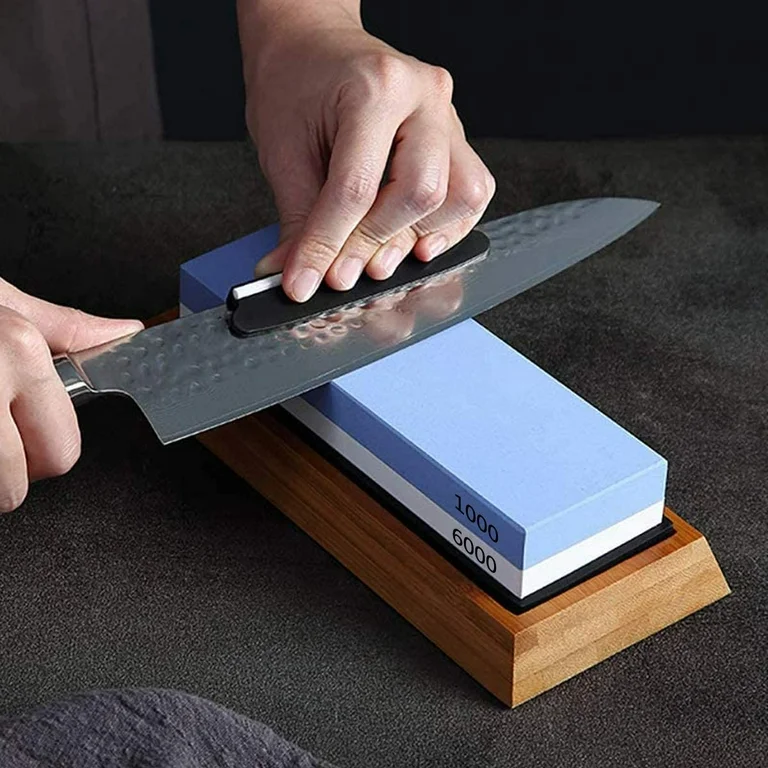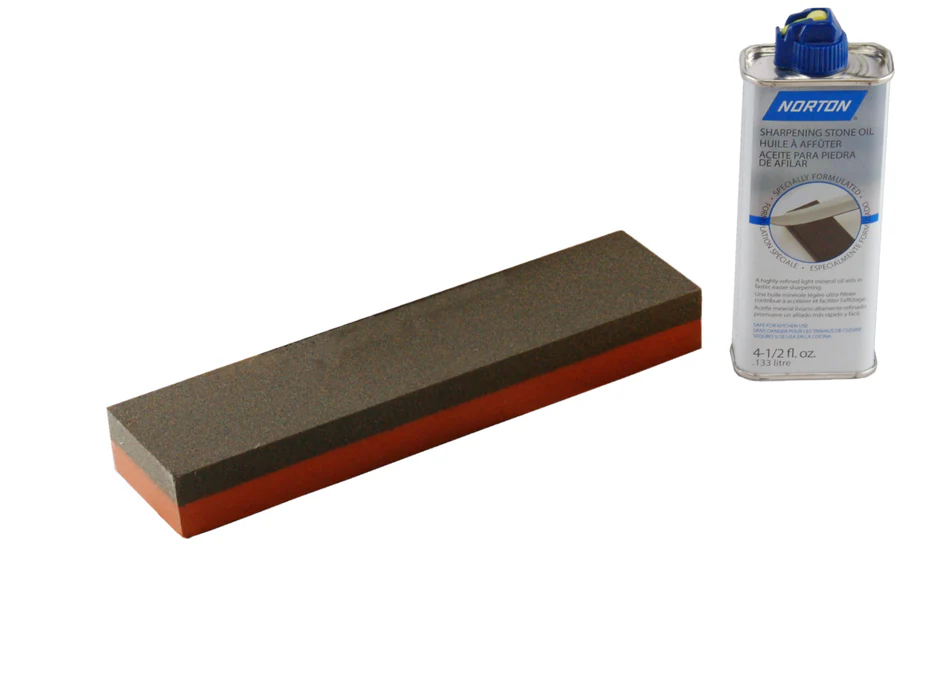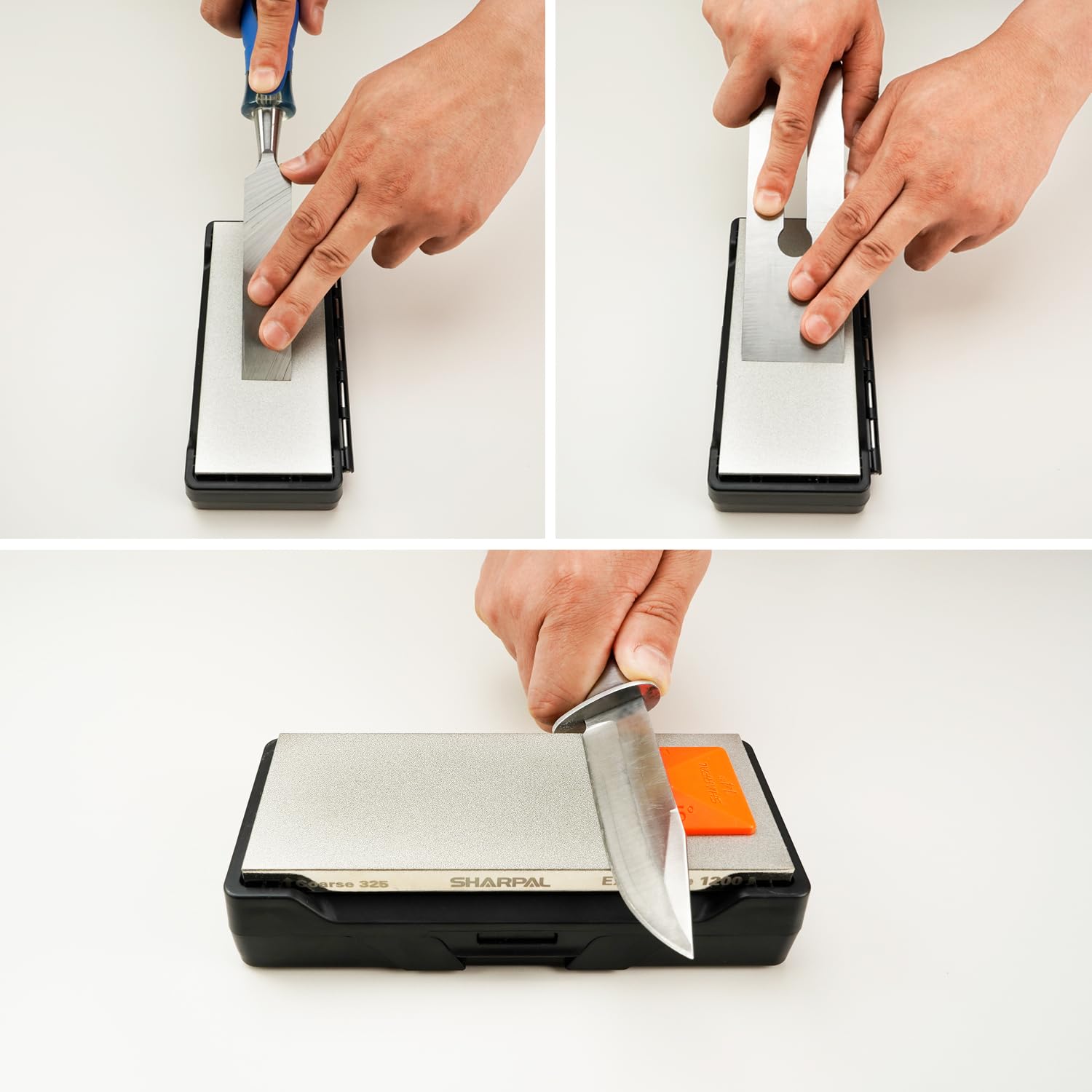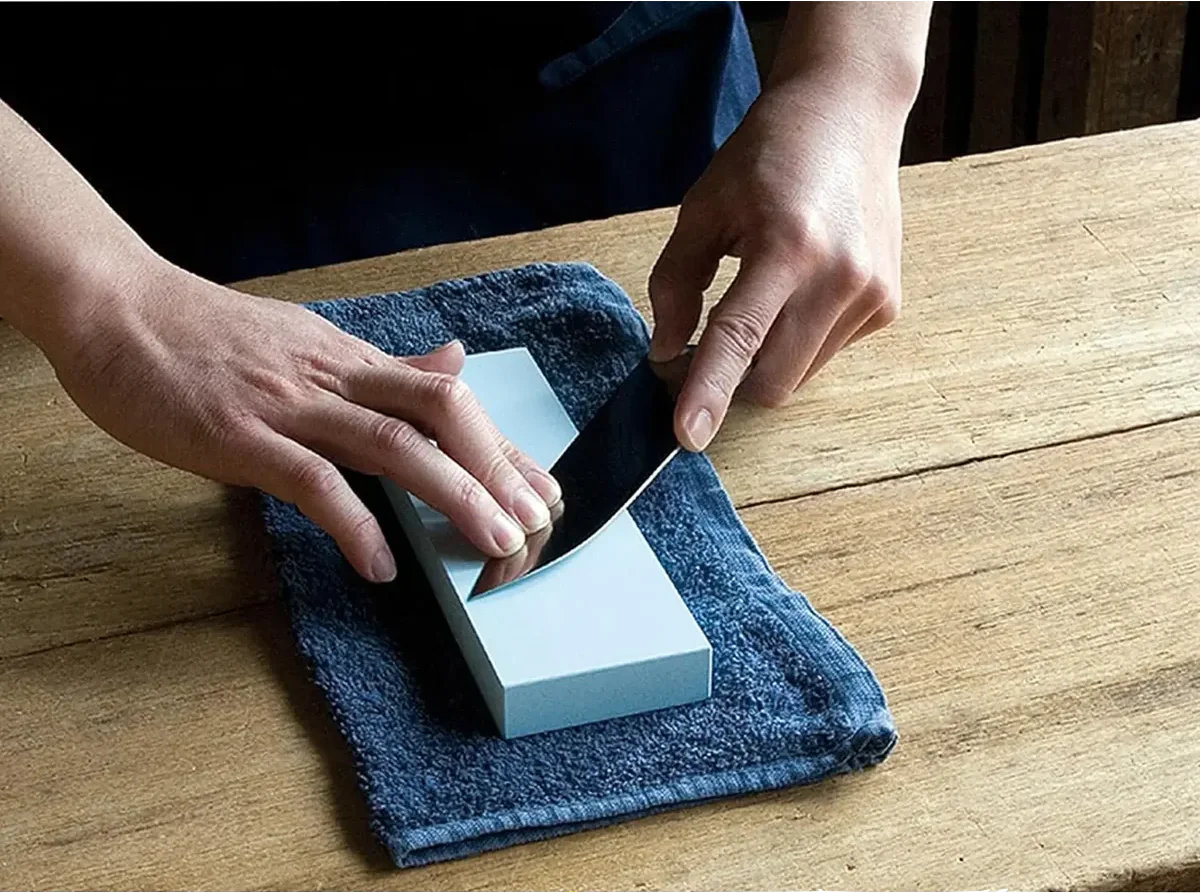2025-02-07
A sharp knife is a chef’s best friend. Whether you’re a home cook, a professional chef, or a knife enthusiast, keeping your blades in top condition is essential. Dull knives not only make cutting inefficient but also increase the risk of accidents due to the extra force required.
One of the best ways to maintain your knives is by using sharpening stones, also known as whetstones. But with so many options available, how do you choose the right one? This guide will walk you through the different types of sharpening stones, how to use them, and what to consider when purchasing your first set.
Before we dive right in to sharpening stones (which is one of many knife sharpening methods), let's briefly compare the different methods available.
When it comes to sharpening knives, different tools offer varying levels of precision, speed, and ease of use. Some methods, like sharpening stones, require patience and technique but provide superior control over the blade’s edge. Others, like pull-through sharpeners and electric grinders, prioritize convenience and speed, making them appealing to casual users. The table below compares four common sharpening methods—sharpening stones, sharpening belts, pull-through sharpeners, and electric grinders—to help you choose the best one for your needs.
| Feature | Sharpening Stones 🪨 | Sharpening Belts 🔄 | Pull-Through Sharpeners 🏃♂️ | Electric Grinders ⚡ |
|---|---|---|---|---|
| Precision | ✅ High – Fine control over sharpening angles. | ⚠️ Medium – Requires practice for consistent angles. | ❌ Low – Fixed angle, no customization. | ❌ Low – Aggressive, removes material quickly. |
| Speed | ❌ Slow – Takes time but gives a controlled edge. | ✅ Fast – Sharpens in minutes. | ✅ Very Fast – A few swipes needed. | ✅ Extremely Fast – Instant results. |
| Material Removal | ✅ Low – Gradual removal, preserving blade life. | ⚠️ Medium – Removes more metal if not careful. | ⚠️ Medium – Can wear down the edge over time. | ❌ High – Removes large amounts of metal. |
| Versatility | ✅ Works for most knives, including delicate ones. | ✅ Can be used for knives, tools, and axes. | ❌ Limited – Only for straight-edged kitchen knives. | ❌ Limited – Usually designed for specific knife types. |
| Ease of Use | ❌ Hard – Requires practice and technique. | ⚠️ Medium – Easy but can ruin the edge if done wrong. | ✅ Very Easy – Just pull through the slots. | ✅ Easy – Just press and grind. |
| Maintenance | ❌ Needs regular flattening and soaking (for water stones). | ⚠️ Belts need replacement over time. | ✅ No maintenance required. | ⚠️ Requires wheel replacements. |
| Heat Generation | ✅ No heat risk. | ⚠️ Can overheat the blade, affecting temper. | ✅ No heat risk. | ❌ High risk – Can overheat and damage steel. |
| Portability | ✅ Compact and travel-friendly. | ❌ Requires power, less portable. | ✅ Small and easy to store. | ❌ Requires power, bulky. |
| Cost | ✅ Budget-friendly over time, lasts for years. | ⚠️ Higher upfront cost but fast. | ✅ Affordable – Cheap but not long-lasting. | ❌ Expensive – High initial investment. |
| Edge Quality | ✅ Razor-sharp, professional-level results. | ✅ Sharp edge, but requires finesse. | ❌ Mediocre – Can dull over time. | ❌ Aggressive, may damage fine knives. |
| Best For | Precision sharpening, kitchen knives, professionals. | Quick sharpening, restoring very dull knives. | Casual users, quick fixes, home kitchens. | Butchers, workshops, sharpening very dull or damaged blades. |
For most individuals, sharpening stones remain as the top choice as they offer the best mix of value and performance.
Not all sharpening stones are the same. Each type has its own characteristics, benefits, and best use cases.
Best for: Kitchen knives, general use knives
Water stones (or whetstones) are one of the most popular sharpening options because they offer excellent sharpening speed and a smooth finish. They require soaking in water before use and need regular flattening to maintain an even surface.
 Knife Sharpening Stone (Water Stone with Bamboo Base) - Walmart
Knife Sharpening Stone (Water Stone with Bamboo Base) - Walmart
Pros: Water stones sharpen quickly, making them a great choice for regular maintenance. Their fine grit options allow for a polished edge, ideal for kitchen knives and precision cutting. They are also available in a wide range of grit levels, making them versatile for both sharpening and finishing.
Cons: They require soaking before use, which adds preparation time. Over time, they wear down unevenly and must be flattened regularly to maintain effectiveness. If neglected, a dished surface can lead to uneven sharpening.
Best for: Heavy-duty tools, woodworking tools, straight razors
Oil stones use oil as a lubricant instead of water. They are typically made from natural materials or aluminum oxide and are known for their durability.
 Traditional Oil Stone Kit - Credits: Sharpening Supplies
Traditional Oil Stone Kit - Credits: Sharpening Supplies
Pros: Oil stones are highly durable and require less frequent flattening compared to water stones. They are excellent for maintaining harder steels and tools that require a consistent edge, such as chisels and straight razors. Their longevity makes them cost-effective over time.
Cons: Sharpening with oil is slower than using water stones, making the process more time-consuming. Additionally, oil can be messy and difficult to clean up, requiring extra maintenance compared to water-based sharpening methods.
Best for: Hard steels, serrated knives, outdoor knives
Diamond stones consist of a metal plate coated with industrial diamonds. They sharpen very quickly and do not require water or oil.
 Diamond Whetstone Knife Sharpener - Credits: SHARPAL (Amazon)
Diamond Whetstone Knife Sharpener - Credits: SHARPAL (Amazon)
Pros: Diamond stones cut extremely fast, making them perfect for sharpening hard steels or quickly restoring a dull edge. They do not wear unevenly like other stones, eliminating the need for flattening. They also work well for sharpening serrated knives and tools with irregular edges.
Cons: High-quality diamond stones are expensive, making them a bigger upfront investment. If used too aggressively, they can remove excessive material from the blade, reducing the knife’s lifespan. Cheaper diamond stones may have a thin diamond coating that wears out over time.
Best for: Finishing and polishing edges
Ceramic sharpening stones are hard and long-lasting. They do not require lubrication and are ideal for refining an already sharp edge.
 Ceramic Super Sharpening Stone - Credits: NANIWA (GlobalKitchen Japan)
Ceramic Super Sharpening Stone - Credits: NANIWA (GlobalKitchen Japan)
Pros: Ceramic stones have a long lifespan and maintain their shape well, making them ideal for fine polishing and honing. They do not require lubrication and provide an ultra-sharp edge, especially on high-end kitchen knives and straight razors.
Cons: They are brittle and prone to cracking if dropped, making them less durable than other sharpening stones. Additionally, they are not effective for very dull knives, as they lack the coarse grit needed for significant material removal.
| Feature | Water Stones 🪨 | Oil Stones 🛢️ | Diamond Stones 💎 | Ceramic Stones 🔶 |
|---|---|---|---|---|
| Best For | Kitchen knives, general use | Heavy-duty tools, woodworking tools, straight razors | Hard steels, serrated knives, outdoor knives | Finishing and polishing edges |
| Lubrication | Requires soaking in water | Requires oil for lubrication | No lubrication needed | No lubrication needed |
| Sharpening Speed | ✅ Fast | ❌ Slow | ✅ Extremely Fast | ⚠️ Medium |
| Edge Quality | ✅ Smooth, refined edge | ⚠️ Medium finish, depends on grit | ✅ Razor-sharp, very aggressive | ✅ Polished and refined edge |
| Durability | ❌ Wears down over time | ✅ Long-lasting | ✅ Extremely durable | ✅ Long lifespan |
| Ease of Use | ⚠️ Requires soaking and flattening | ✅ Low maintenance | ✅ Easy, no flattening needed | ⚠️ Can be brittle and break if dropped |
| Cost | ⚠️ Medium – Affordable but needs replacement over time | ✅ Budget-friendly, long-lasting | ❌ Expensive but durable | ⚠️ Medium – Not as expensive as diamond stones |
| Versatility | ✅ Works for most kitchen knives | ✅ Good for straight razors, chisels, and woodworking tools | ✅ Best for hard steel and serrated edges | ❌ Not ideal for very dull knives |
| Maintenance | ❌ Needs regular flattening | ✅ Low maintenance | ✅ No flattening required | ❌ Can break if dropped |
Choosing the right sharpening stone depends on your needs, experience level, and the type of knives you use.
Sharpening stones come in different grit sizes, which determine how much metal is removed from the blade. For beginners, a combination stone with two grit levels (such as 1000/6000) is a good starting point.
The following table shows the relationship between grit level and the type of sharpening stone chosen.
| Stone Type | Grit Range | Common Grits Available | Best Use |
|---|---|---|---|
| Water Stones 🪨 | 120 – 12,000+ | 400 (coarse), 1000 (medium), 3000+ (fine) | General sharpening, refining, polishing |
| Oil Stones 🛢️ | 100 – 8000 | 200 (coarse), 600 (medium), 2000+ (fine) | Heavy-duty sharpening, woodworking tools |
| Diamond Stones 💎 | 120 – 8000 | 220 (coarse), 600 (medium), 1200+ (fine) | Hard steels, outdoor knives, serrated knives |
| Ceramic Stones 🔶 | 1000 – 30,000 | 2000 (medium), 5000 (fine), 10,000+ (ultra-fine) | Finishing and polishing |
The grit level may be restricted to the type of sharpening stone you use, so keep that in mind when choosing the most suitable stone for your needs.
Sharpening your knife with a stone requires some practice, but once mastered, it becomes an essential skill. Here’s a step-by-step guide:
Step 1: Soak the Stone (if needed)
If you are using a water stone, soak it in water for at least 10-15 minutes before use. Oil stones require a light coating of honing oil.
Step 2: Find the Correct Angle
Most kitchen knives are sharpened at an angle of 15-20 degrees, while outdoor knives may require a 20-25 degree angle. If unsure, hold your knife at about the width of two stacked coins from the stone.
Step 3: Start Sharpening
Place the blade at the desired angle on the stone. Using light, even pressure, slide the knife across the stone in a sweeping motion. Repeat this process on both sides of the blade.
Step 4: Move to a Finer Grit
Once the blade feels sharp, move to a higher grit to refine the edge.
Step 5: Clean and Test the Edge
After sharpening, rinse the knife and test the sharpness by slicing a piece of paper or a tomato. If it cuts effortlessly, you’ve done it right!
Here are four common mistakes that amateur knife sharpeners may encounter when using a sharpening stone for the first time.
Let the stone do the work—excess pressure can damage the blade.
Applying excessive pressure while sharpening can cause more harm than good. A sharpening stone or belt is designed to gradually remove small amounts of metal to create a sharp edge. When too much force is used, the blade can develop micro-fractures or chips, particularly in high-carbon or thin knives.
Additionally, excessive pressure can cause the stone or belt to wear unevenly, leading to dips or grooves that make future sharpening more difficult. The key is to use light, consistent strokes, letting the abrasive surface do the work rather than forcing the blade through.
Try to maintain a steady angle throughout the process.
Maintaining a consistent angle throughout the sharpening process is crucial for creating a uniform edge. When the angle changes during sharpening, the knife develops an uneven bevel, leading to an inconsistent edge that won’t cut cleanly. This problem is especially noticeable with freehand sharpening, where slight wrist movements can inadvertently change the angle.
Inconsistent angles can also reduce the knife's lifespan, as frequent sharpening with improper angles removes more material than necessary. To avoid this, focus on developing a steady hand, use angle guides if needed, and practice with slow, controlled strokes until you can confidently maintain a uniform angle throughout the sharpening process.
If the knife is very dull, don’t jump straight to fine grit; start with a medium grit first.
Sharpening is a progressive process that requires moving through different grit levels to achieve the best edge. Skipping from a coarse grit directly to a fine grit without using an intermediate step can leave the edge unfinished, with small burrs or rough areas that hinder cutting performance. Coarse grits (120-400) remove large amounts of metal and are best for repairing nicks or reshaping dull blades, while medium grits (800-2000) refine the edge, and fine grits (3000-8000) polish and hone the knife for a razor-sharp finish.
If an intermediate grit is skipped, the finer grit won’t be able to smooth out the rough surface left by the coarse grit, resulting in a suboptimal edge. The best practice is to gradually progress through grit levels, ensuring each step builds on the previous one for a sharp and durable edge.
Over time, stones develop uneven surfaces. Use a flattening stone or sandpaper to level it out.
Sharpening stones, especially water stones, gradually wear down with use, developing low spots or uneven surfaces that can affect sharpening performance. If a stone is not flattened regularly, it creates an inconsistent surface, making it difficult to maintain even contact between the knife and the stone. This can result in uneven sharpening, where some parts of the blade receive more attention than others.
To keep a whetstone in optimal condition, use a flattening stone, diamond plate, or coarse sandpaper to level the surface periodically. Regular maintenance of sharpening stones ensures consistent performance and prevents unnecessary wear on the knife edge due to an uneven sharpening surface.
Investing in a good sharpening stone is the first step to keeping your knives in top condition. When selecting a sharpening stone, consider the following factors:
Whether you choose water stones, oil stones, or diamond stones, the key is to practice and maintain your sharpening skills regularly. And most importantly, enjoy the knife sharpening process!
Still curious? Check out our Ultimate Guide to Knife Sharpening.
P.s. If you’re in Singapore and need professional sharpening, feel free to visit our knife sharpening service! We offer precision sharpening for all types of knives, ensuring your blades stay razor-sharp.
We are currently only operating in Singapore. Our next pick up will be on Saturday, Dec 20, 2025.